Public realm provides a setting for community life and includes all parts of the urban environment that people can experience or access, such as plazas and squares, waterfronts and open spaces (such as parks and reserves), laneways and walkways, civic buildings, malls and arcades.
Because public realm is open and accessible to everyone and provide access across towns and cities, it influences how permeable the pedestrian network can be, and therefore needs to be planned and designed to cater for the needs of people walking (with or without assistance).
Specific pedestrian considerations for these types of public realm are outlined below but the principles that are common to all include:
According to the Value of Urban Design, The economic, environmental and social benefits of urban design(external link) (Ministry for the Environment, 2005), high quality public realm can:
PNG: Pedestrian network characteristics
PNG: Universal design principles
Pedestrian only streets are closed to vehicles at most times of the day with essential vehicle access by operable bollard/managed access regime. Pedestrian only streets support high density of commercial and residential land-use. For this type of street to be successful it should have very-high volumes of people walking across and along the street, have street furniture that supports street activities and places to dwell.
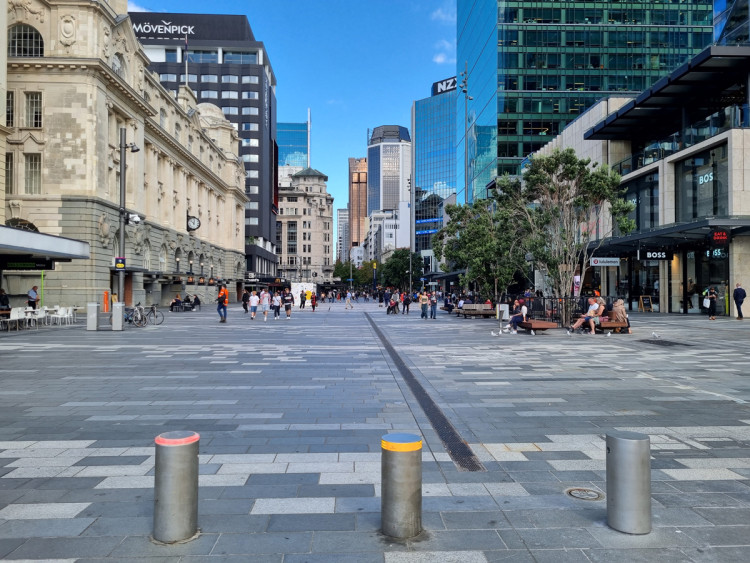
A pedestrian only street – Lower Queen Street, Auckland. (Photo: Patrícia Vasconcelos)
Pedestrian only streets such as pedestrian malls, and plazas and squares are destinations and often link to other streets and buildings too. These public spaces require consideration of people walking, in particular:
To enable more inclusive pedestrian malls, plazas and squares, they should be designed with consideration of the specific guidance below.
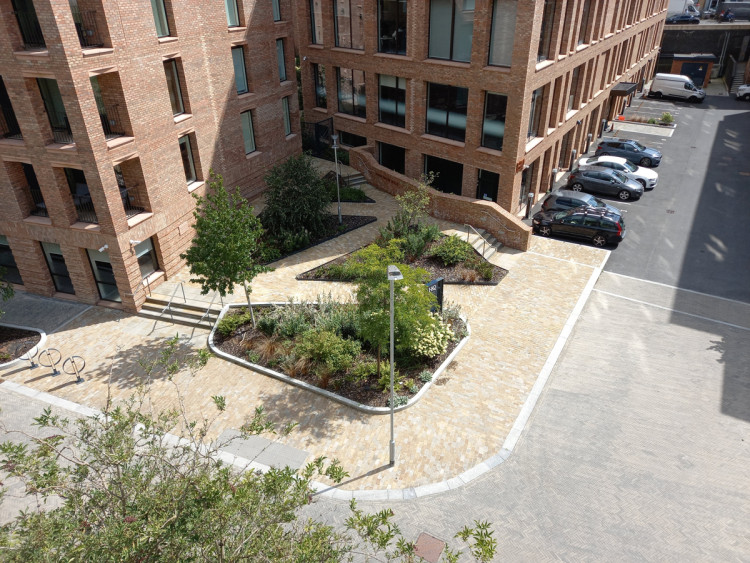
Street/plaza interface with steps and ramp option, York, UK. (Photo: Jeanette Ward)
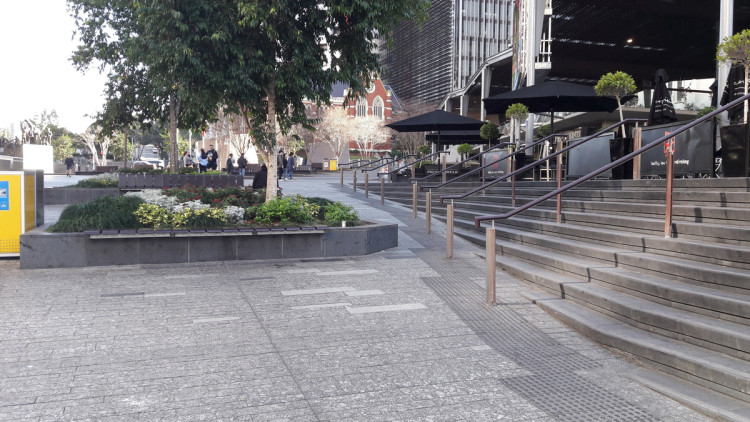
Stair balustrades and planter box create pinch point for pedestrians, Brisbane. (Photo: Jeanette Ward)
Waterfront areas and open spaces (including parks and reserves) need to be designed for people walking with consideration of the following aspects:
Providing connections for people walking and wheeling between streets assists the permeability of the pedestrian network, making for more direct journeys. These are often in the form of laneways in town or city centres and walkways in residential and industrial areas. These facilities should be encouraged and designed accordingly to the key pedestrian design principles.
Laneways are generally in a city or town centre and have a high place value and can be fully pedestrianised or provide a movement function for vehicles to service buildings or activities within the laneway, either full time or at defined times. They are part of the pedestrian network within large blocks, connecting streets and often connecting to other laneways as shown below.
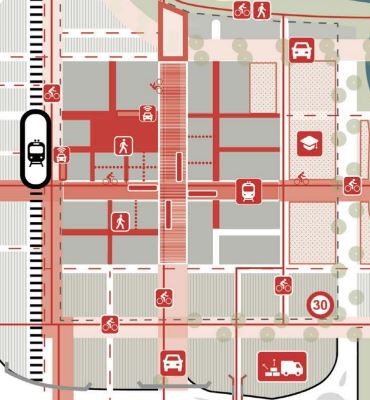
Example of a city centre with laneways between streets to improve permeability (Source: Aotearoa Urban Street Planning and Design Guide)
They provide placemaking and greening opportunities making them attractive for people to walk and dwell.
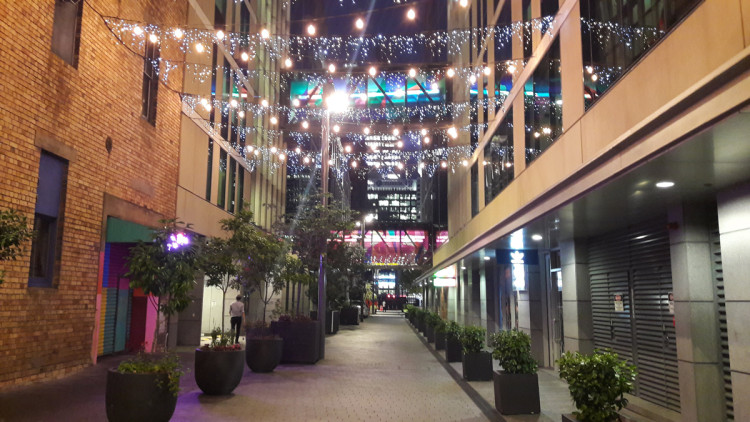
Attractive laneway in Auckland with greenery and effect lighting. (Photo: Jeanette Ward)
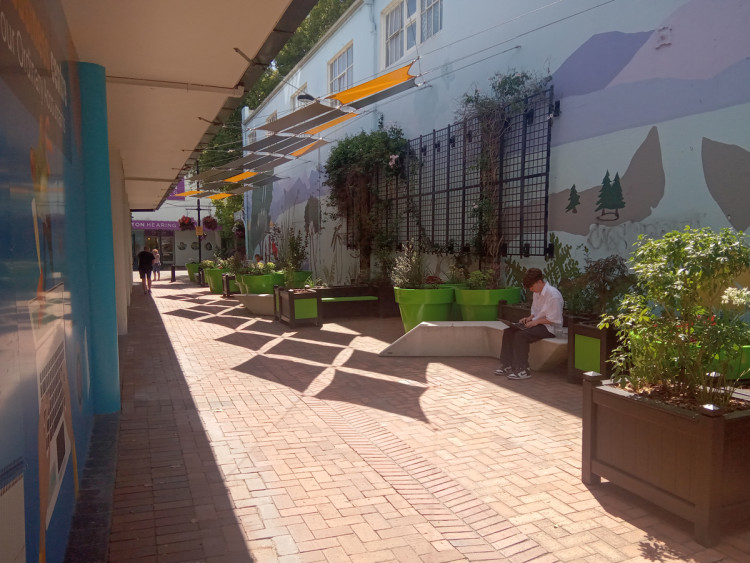
Laneway in Nelson with outdoor sitting opportunities, street art and landscaping. (Photo: Mark Edwards)
The width of a laneway is less than a street and they generally have a flush surface between buildings that allows flexible use of the space. The example below shows a laneway where a café is using the space for outdoor seating with furniture that can be easily relocated or removed. The example also shows that space is available for vehicle access. It is important to provide an accessible zone for visually disabled pedestrians, typically with one building edge providing the defined edge of the zone.
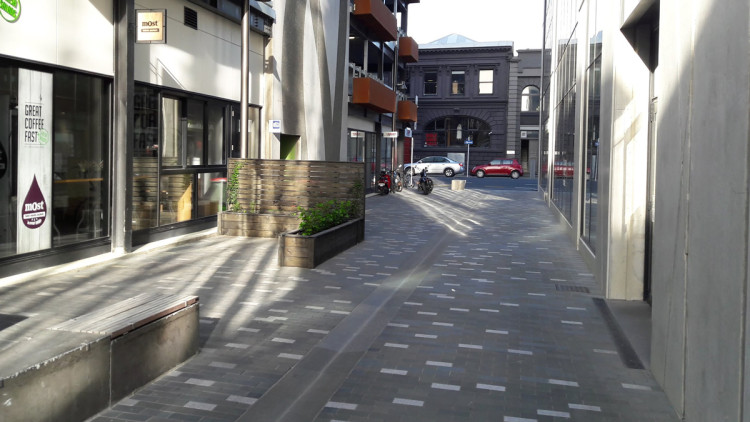
Laneway in Christchurch with outdoor dining space and vehicle access for servicing. (Photo: Jeanette Ward)
Walkways might feature a cycle path but do not allow vehicle access. Sometimes walkways are referred to as walking/cycling accessways in district plans.
The provision of walkways between streets, and between streets and cul-de-sac heads improves walkability in residential and industrial areas.
Cul-de-sac linkage requirements. (Source: Whangarei District Council Urban Design Guidelines for Residential Development)
Historically walkways have been designed as very narrow spaces surrounded with high solid fences creating potentially unsafe environments and being prone to graffiti and vandalism. As such, they are often avoided by some pedestrians.
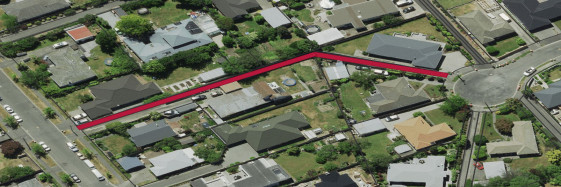
Example of a narrow, long and kinked accessway – this is not best practice.
To mitigate the issues described above, both Crime Prevention Through Environmental Design (CPTED) and Universal design principles should be followed when planning and designing walkways to ensure a good and safer pedestrian facility. Often district plans have also some provisions, such as: